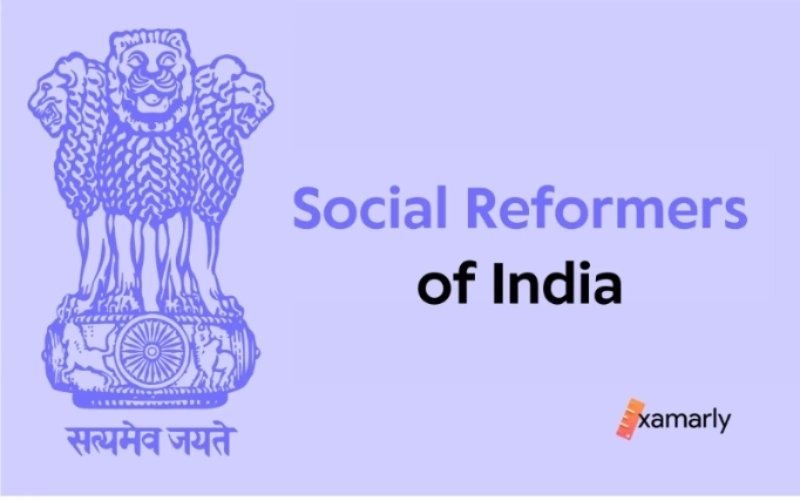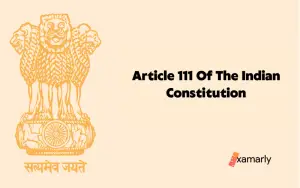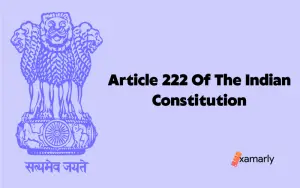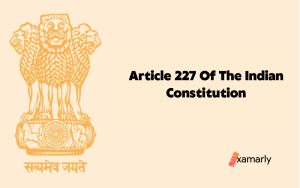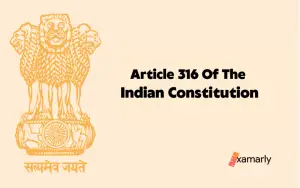Social reform is an effort to improve society by changing social behavior through cultural or social development. Reform is often a reaction against perceived oppression. It has become very popular in progressive politics and sociology.
The 19th century was a period of significant social and religious reforms in India. The social reformers of India included prominent figures like Jyotiba Govind Phule, Gopal Hari Deshmukh, Justice Ranade, K.T. Telang, B.M. Malabari, D.K. Karve, Sri Narayan Guru, and B.R. Ambedkar. In addition to public speaking, the reformers spread their message through literature.
Read on to find out more about some of the most important socio-religious reform movements in India that will help with your UPSC preparation. This article aims to introduce you to some of these movements and their achievements. Also, learn about some of the key events in Indian history.
- Theological and Societal Changes In Nineteenth-century India
- What Is Social Reform Movement?
- Types Of Socio-Religious Reform Movements
- The Women Social And religious Reformers of India
- Information About Social Reformers of India
- Raja Ram Mohan Roy
- Swami Vivekananda
- Swami Dayananda Saraswati
- Mother Teresa
- Baba Amte
- Ishwar Chandra Vidyasagar
- Conclusion
- Frequently Asked Questions
Theological and Societal Changes In Nineteenth-century India
Sociological and theological changes in India throughout the nineteenth century were a major component of the Indian Renaissance. The prevailing social and religious obscurantism and superstitions had distorted the social life of the subcontinent.
The major social issues addressed by social reformers of India during this era included infanticide, sati, child marriage, widow remarriage, casteism, and idolatry. The issues regarding the exploitation of priests and the exploitation of women were also addressed.
Many reforms were aimed at improving the lives of Indians. The Hindu Conference of India, for instance, advocated inter-caste marriages and opposed kulinism and polygamy.
The Akali Movement, which sought to reform Gurdwara management, was formed in the 1850s. The British Government, however, did little to educate women and did not make substantive efforts to improve lot of women.
In the same way, the Brahmo Samaj, which promoted monotheism and condemned idolatry, advocated a more rational approach to religion and emphasized the dignity of the individual. They also opposed caste systems and supported education and the development of public health facilities.
The Brahmo Samaj split multiple times during the 19th century, but ultimately their reforms were a major step towards the creation of the Ramakrishna Movement.
What Is Social Reform Movement?
Social reform movements in India have taken several forms. Reform movements are generally formed to carry out specified systemic improvements. The revolutionary movements, on the other hand, deny that the existing system is viable and seek to change society from within according to their own ideological blueprint. These movements often turn violent as they advance. Reform movements are classified into two types:
- Reformist Movement
- Revivalist Movement
Here is a look at two sorts of reform movements in India. Let’s examine each in turn.
Types Of Socio-Religious Reform Movements
Reformist Movements
Throughout Indian history, social reform movements have worked for the benefit of society. Reform movements are a reaction to the change in time and scientific thinking and were aimed at the all-around regeneration of society.
Prarthana Samaj
Prarthana Samaj, founded in 1867 by Atmaram Pandurang, was an organization of Hindu religious reformers of India. Its name translates to “Prayer Society” and it was created with the aim of promoting social reforms within Hinduism.
Atmaram Pandurang, the founder of this movement, was a medical practitioner and activist who was one among the many social reformers of India. He was also a co-founder of the Bombay Natural History Society.
| Features Of Prarthana Samaj | |
| 1. | The Prarthana Samaj’s aim was to promote monotheism, denounce polytheism, and uplift women. It fought against caste distinction and promoted monotheism. The group’s members opposed child marriage and caste and advocated education for women. |
| 2. | A significant figure in the Prarthana Samaj movement, Chandavarkar was also a philosopher at heart. |
| 3. | Because of the efforts of the Telugu reformer Veeresalingam, the organization’s operations expanded to cover the southern region of India. |
| 4. | It eventually influenced a good deal of Western India but to a lesser extent in Southern India. |
| 5. | They also embraced all religious beliefs, including those of Christians and Buddhists. They were adamantly opposed to caste divisions in society. |
| 6. | Members of the Samaj ate communal meals cooked by a ‘lower caste’ (i.e. untouchables) cook. They also ate Christian-baked bread and drank water delivered by a Muslim. |
| 7. | After scholar and reformer Mahadev Govind Ranade joined the movement, it gained speed and popularity. |
Brahmo Samaj of Southern India
The founder of the Brahmo Samaj, Raja Ram Mohan Roy, opposed idol worship and unnecessary ritualism and argued that the Upanishads support monotheism.
The Brahmo Samaj was a Hindu organization that has been active in social reform since the 19th century. Its main goal was to clean Hinduism of idolatry and to promote monotheism by assimilation of teachings from other religions. Its members opposed idolatry and caste and supported remarriage and modern education. However, not all Brahmo members are born into the Brahmo community. Many members were born into other families and joined the organization as a child.
The Brahmo Samaj fought against many social ills prevailing in Hindu society and made many reforms in India. The group challenged the social class system as well as promoted education for the masses, supported women’s rights, and fought against polytheism and idolatry in Hinduism. They also prohibited criticizing other religions.
Aligarh Movement
The Aligarh Movement brought Muslims together and promoted education and the improvement of Muslims in India. The movement was crucial for regenerating Muslim society in the country after 1857. Its main aim was to promote the rights of Muslims in India. In addition, it provided Muslims with an alternative language to express their thoughts. But its impact went beyond that.
The Aligarh Movement began in 1875 with the founding of the Mohammedan Anglo-Oriental College, which was based in Aligarh. The movement’s objective was to educate the Muslim population in modern scientific education. Its founder, Sir Syed Ahmed Khan, opposed the participation of Muslims in the Indian National Congress. Khan was a pioneer of the Aligarh Movement. By advocating a liberal education, he was able to convince Muslims to integrate into modern society and study English.
Revivalist Movement
These groups initially sought to restore traditional Indian practices and beliefs after coming to the conclusion that western ideas had eroded these values. Some of these groups are described in detail below:
Arya Samaj
Arya Samaj was a social reform movement founded in 1875 by Swami Dayanand Saraswati. They aimed to restore Hinduism to its original Vedic tradition and convert non-Hindus to Hinduism. Swami Dayananda Sarasvati’s vision of a purified Arya dharma was so strong that it eventually became a worldwide organization.
| 1. | Its founding principles are the rejection of animal sacrifice, untouchability, and the worship of murtis. |
| 2. | The Arya Samaj criticized idols, rituals, polytheism, the priesthood, child marriage, animal sacrifice, and the social class system. They also encouraged the sharing of Western scientific knowledge. |
| 3. | They contributed to the betterment of women’s lives, spoke for social equality, and rejected class structures like those pertaining to untouchability and caste rigidity. |
| 4. | Marriages between different castes were also favored, as were the remarriages of widows. |
| 5. | Similar to other social reformers of India in his time, Swami Dayananda Saraswati believed the Vedas to be perpetual and without flaw. |
Deoband Movement
In 1866, two great Indian Islamic theologians and thinkers Muhammad Qasim Wanotavi and Rashid Ahamad Gangohi founded a school in Deoband. Deoband was concerned with providing the Muslim community with religious education.
The Deoband Movement sought to instill moral values and religiosity in the Muslim community.
Other Important Social And Religious Reform Movements
Ramakrishna Mission
- The mission was founded on 1 May 1897 by Swami Vivekananda, and its philosophy and actions are based on the Hindu teachings of Vedanta.
- Founded in the town of Belur, Ramakrishna Mission functions out of a number of branches worldwide.
- The teaching of Ramakrishna Paramhansa served as the founding principle of the Ramakrishna Movement.
- Activities have been centered on health, education, the welfare of the underprivileged, relief and rehabilitation, and promoting arts, culture, morality, ethics, and spirituality.
- The organization staunchly opposes any sort of discrimination based on factors such as caste, creed, religion, and nationality.
- Religious unity and unselfish service to humanity are at the root of the Ramakrishna Mission.
- Motto: ATMANO MOKSHARTHAM JAGAT HITAYA CHA: For one’s own salvation and for the good of the world – Formulated by Swami Vivekananda.
Satyashodhak Samaj
- Satyashodhak Samaj was founded in the year 1873 in Maharashtra. The credit for its establishment is held by Jyotirao Govindrao Phule.
- It was a reformation-driven society that sought educational opportunities, new social rights, justice, and political access for the downtrodden segments of society, and these rights shall be granted without regard to caste, gender, or religion.
- They were adamantly opposed to idol worship and the social class system.
- The leader of this new social and intellectual movement, Jyotirao Phule, was supposedly the first to use the term Dalit (Dalit means so-called lower caste people).
Young Bengal Movement
- Henry Louis Vivian Derozio was the driving force behind the Youth Bengal Movement in Calcutta. It was established in Calcutta during the 1820s.
- Henry Louis Vivian Derozio advocated free thinking and endorsed the spirit of liberty, equality, and freedom.
- More specifically, he questioned the core practices of traditional, orthodox Hinduism.
- The Young Bengal was a collective of young and independent thinkers among the Bengali people at Hindu College in Calcutta.
Widow Remarriage Association
This Association was founded by Pandit Vishnu Shastri in 1860. The purpose of this movement is to encourage widow remarriage and to oppose child marriages and the costs of marriage. It also combats the widow’s custom of cutting off her hair.
The Women Social And religious Reformers of India
Indian women have always been a symbol of strength, intelligence, and beauty. They have earned a place in the hearts of people from different walks of life. Dedicated and focused women have contributed a great deal to the country’s overall development. Some women have even gone on to become major social reformers of India, who helped to change society. As Indian society faces many challenges, women are shining brightly for the country.
Some prominent women social reformers who are part of social movements to uplift the Indian society and make them free from the prevailing social evils are listed below:
- Aruna Roy
- Medha Patkar
- Kiran Bedi
- Arundhati Roy
- Iron Sharmila
- Manasi Pradhan
- Pramila Nesargi
- Amala Akkineni
- Laxmi Agarwal
- Shaheen Mistri
Information About Social Reformers of India
Raja Ram Mohan Roy
Around the start of the 19th century, India faced multiple social problems such as superstitions, the caste system, the burning of widows, and many more. Ram Mohan was a leading figure among Indian social reformers who highlighted these ills and attempted to eliminate them. As a result, he played a significant part in shaping the country into what it is today.
His efforts and roles led to his being recognized as the “father of modern India”. He is also referred to as the “architect of the Indian Renaissance”.
On Aug 20, 1828, Ram Mohan started the Brahmo Samaj in order to uplift the status of women, preaching monotheism, as opposed to widespread Brahmanism, and against idol worship. Ram Mohan founded the Hindu College and Vedanta College in Calcutta.
Swami Vivekananda
His biggest achievement was the rebirth of the original meaning of Hinduism, which he accomplished through his lectures at the 1893 Parliament of the World’s Religions in Chicago.
Swami Dayananda Saraswati
Mool Shankar was Swami Dayananda Saraswati’s childhood name. He was a great supporter of the Vedas, as seen by his saying, Return to Vedas. To propagate his ideas, he established Arya Samaj in 1875. Swami’s contribution to eradicating social evils in India created a sense of pride, as seen by Annie Besant for him that he was among the many social reformers of India proclaiming, “India is for Indians.”
Mother Teresa
She was born on 26th Aug 1910 in Skopje, Macedonia and given the name Anjeze Gonxhe Bojaxhiu. She is a Roman Catholic religious sister and a great social reformer. Her entire life, she dedicated herself to helping the impoverished people of the world. At the time, in 1950, she founded The Missionaries of Charity with 12 members.
Baba Amte
Mahatma Amte, a social reformer in modern India, was well-known. As a child, he was called Murlidhar. He followed Mahatma Gandhi as he was very much inspired by him.
In the interest of rehabilitative care and leprosy treatment for society’s outcasts, he helped establish three Ashrams in Maharashtra. He took it a step further by founding a hospital on 15th Aug 1949 in Anandvan.
His contribution to social reforms in India includes working for the displaced people affected by the construction of the Sardar Sarovar Dam. He was also associated with Narmada Bachao Andolan. In short, he dedicated his life entirely to the welfare of society and to the better future of India.
Ishwar Chandra Vidyasagar
Vidyasagar greatly uplifted the status of women and was a supporter of widow remarriage. He managed to convince the British government to pass the Widow Remarriage Act of 1856, giving widows the legal right to remarry and conceive.
After initiating reforms with Raja Ram Mohan Roy, he participated in the activities of the Brahmo Samaj. He also contributed a lot to the education field.
| UPSC Notes On More Topics: |
|---|
| Six Schools of Indian Philosophy |
| First Session of Indian National Congress: History |
| The Sanyasi Revolt: History, Background and Leaders |
Conclusion
Social Reformers of India are a bunch of people who were written into history because they struggled and made sacrifices in order to move their country forward. These reformers founded and supported many reform movements in order to free India from the prevailing evil practices (like caste opposition, exploiting untouchables, child marriage, etc).
Hence, the social reform movements uplifted the status of the society through continuous efforts of these reformers. Everyone should praise the efforts made by these social reformers of India.
Frequently Asked Questions
Who are the famous social reformers of India?
Some of the famous Indian social reformers include Dr. BR Ambedkar, Raja RamMohan Roy, Mother Teresa, Mahatma Gandhi, Ishwar Chand Vidyasagar, Jyotiba Phule, Swami Vivekanand, Baba Amte, and Swami Dayanand Saraswati.
Who founded the Adi Brahmo Samaj?
The Brahmo Samaj was split in 1866 and Devendranath Tagore founded the Adi Brahmo Samaj.
What was the main aim of Raja Ram Mohan Roy
The main aim of Raja Ram Mohan Roy was to promote modern and liberal ideas and to eradicate social evils like sati, caste discrimination, and illiteracy.


